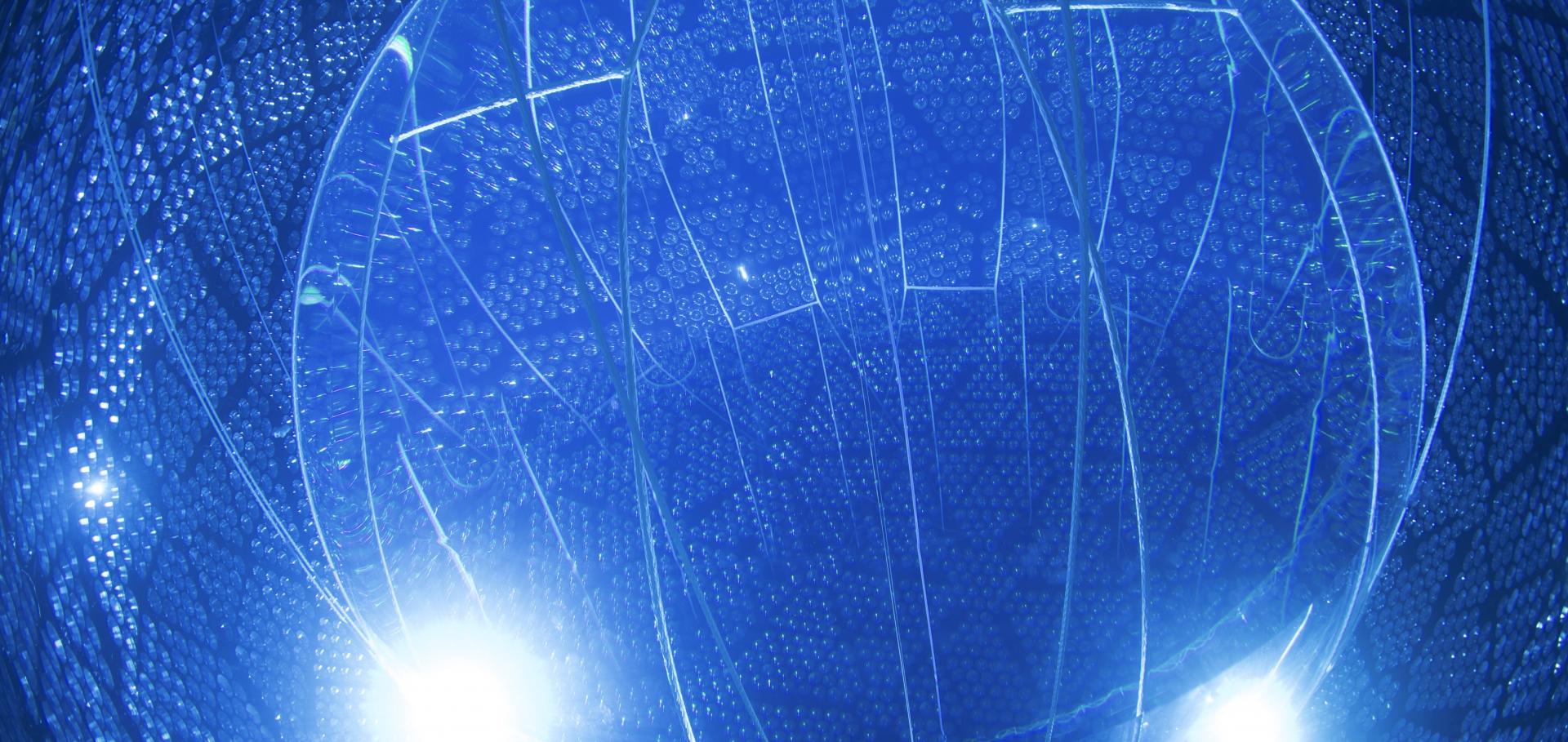Measurement of the cosmic ray and neutrino-induced muon flux at the Sudbury neutrino observatory
Physical Review D - Particles, Fields, Gravitation and Cosmology 80:1 (2009)
Abstract:
Results are reported on the measurement of the atmospheric neutrino-induced muon flux at a depth of 2 kilometers below the Earth's surface from 1229 days of operation of the Sudbury Neutrino Observatory (SNO). By measuring the flux of through-going muons as a function of zenith angle, the SNO experiment can distinguish between the oscillated and unoscillated portion of the neutrino flux. A total of 514 muonlike events are measured between -1≤cos θzenith≤0.4 in a total exposure of 2.30×1014cm2s. The measured flux normalization is 1.22±0.09 times the Bartol three-dimensional flux prediction. This is the first measurement of the neutrino-induced flux where neutrino oscillations are minimized. The zenith distribution is consistent with previously measured atmospheric neutrino oscillation parameters. The cosmic ray muon flux at SNO with zenith angle cos θzenith>0.4 is measured to be (3.31±0.01(stat)±0.09(sys))×10-10μ/s/cm2. © 2009 The American Physical Society.Measurement of the cosmic ray and neutrino-induced muon flux at the Sudbury neutrino observatory
PHYSICAL REVIEW D 80:1 (2009) ARTN 012001
Independent measurement of the total active 8B solar neutrino flux using an array of 3He proportional counters at the Sudbury Neutrino Observatory.
Phys Rev Lett 101:11 (2008) 111301
Abstract:
The Sudbury Neutrino Observatory (SNO) used an array of 3He proportional counters to measure the rate of neutral-current interactions in heavy water and precisely determined the total active (nu_x) 8B solar neutrino flux. This technique is independent of previous methods employed by SNO. The total flux is found to be 5.54_-0.31;+0.33(stat)-0.34+0.36(syst)x10(6) cm(-2) s(-1), in agreement with previous measurements and standard solar models. A global analysis of solar and reactor neutrino results yields Deltam2=7.59_-0.21;+0.19x10(-5) eV2 and theta=34.4_-1.2;+1.3 degrees. The uncertainty on the mixing angle has been reduced from SNO's previous results.Determination of the νe and total B8 solar neutrino fluxes using the Sudbury Neutrino Observatory Phase I data set
Physical Review C Nuclear Physics 75:4 (2007)
Abstract:
This article provides the complete description of results from the Phase I data set of the Sudbury Neutrino Observatory (SNO). The Phase I data set is based on a 0.65 kiloton-year exposure of 2H2O (in the following denoted as D2O) to the solar B8 neutrino flux. Included here are details of the SNO physics and detector model, evaluations of systematic uncertainties, and estimates of backgrounds. Also discussed are SNO's approach to statistical extraction of the signals from the three neutrino reactions (charged current, neutral current, and elastic scattering) and the results of a search for a day-night asymmetry in the νe flux. Under the assumption that the B8 spectrum is undistorted, the measurements from this phase yield a solar νe flux of (νe)=1.76-0.05+0. 05(stat.)-0.09+0.09(syst.)×106 cm-2 s-1 and a non-νe component of (νμτ)=3.41-0.45+0.45(stat.)-0.45+0.48(syst.)×106 cm-2 s-1. The sum of these components provides a total flux in excellent agreement with the predictions of standard solar models. The day-night asymmetry in the νe flux is found to be Ae=7.0±4.9(stat.)-1.2+1.3%(syst.), when the asymmetry in the total flux is constrained to be zero. © 2007 The American Physical Society.Determination of the νe and total 8B solar neutrino fluxes using the Sudbury Neutrino Observatory Phase I data set
PHYSICAL REVIEW C 75:4 (2007) ARTN 045502


